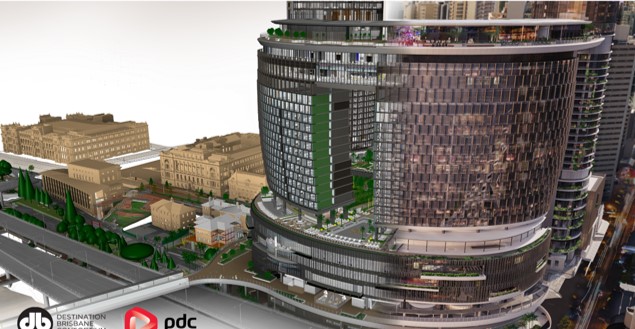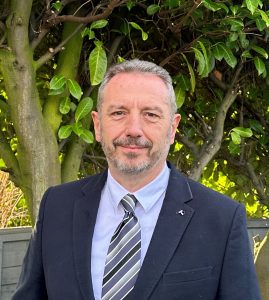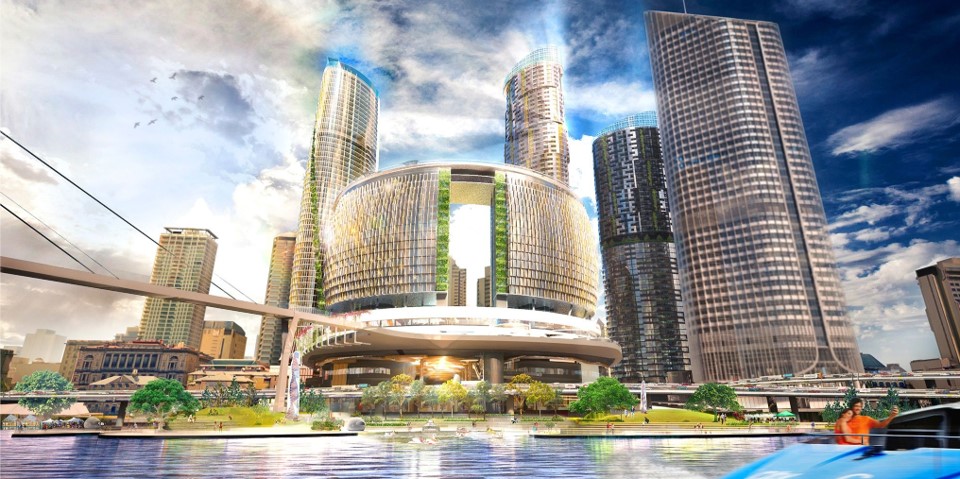PBC Today sat down with Andrew Bellerby, Director at DBM Vircon, to discuss his journey in digital construction, business development, and DBM Vircon’s role in the digital engineering and detailing industry
Andrew joined DBM Vircon at the beginning of the year, returning to the delivery side of the industry after spending more than 25 years providing digital technology solutions to AECO companies with roles heading up Tekla/Trimble and Solibri’s operations in the UK.
Andrew started his career initially serving a traditional structural draughtsman apprenticeship and then started training as a structural engineer.
It very quickly became apparent to him, however, that 3D technology and implementation of that on projects was his forte.
That passion led him into early roles that allowed him to travel the world and assist, initially, steelwork companies, engineers and drawing offices with digitalisation of their processes and utilisation of data-rich models as far back as the early 90’s.
His career in technology later turned to management and leadership of business development in different markets as “BIM” became more mainstream.
He’s now back working with projects from pre-construction through to asset management with DBM Vircon, a premier construction modelling, detailing and digital engineering company that deliver high-profile projects using state-of-the-art technology with uncompromising detail and precision.
Can you explain a little bit about your role at DBM Vircon?
My role at DBM Vircon is business development for UK and Ireland, and then from there pushing on into mainland Europe to mirror the success we’ve had in the Asia-Pacific, Australia region where we started and in North America.
We’ve had an office in the UK for almost 20 years focusing mainly on steel detailing for major projects in the UK and overseas. DBM Vircon nowadays are far more diverse in our service offering.
My role includes educating and supporting the construction industry on our abilities and expertise outside of detailing and construction modelling, bringing innovative and perhaps differing ways of delivering projects to the UK market, leveraged from our Australian and North American approaches, experience, innovations and case studies.
What has your journey in construction been like so far?
My background is mainly in construction software. Before that, I started in the industry on a traditional apprenticeship scheme as a trainee structural draughtsman at a steelwork contractor in my hometown of Harrogate; unfortunately, now no longer in business.
From there I joined Severfield Reeve (now Severfield), who at the time were an up and coming and forward-thinking company which became the largest steelwork contractor in the UK, and now one of the largest in Europe.
That was when I first got involved with 3D modelling, utilizing the model data and started to see and really understand the inherent benefits almost 30 years ago.
Originally, I started on the drawing board and then moved to 2D CAD, but the structural steel industry adopted 3D modelling very early.
The data-rich models even then were used for fabrication, ordering materials, delivery and erection sequences and much more. My next career move was to the software company that was providing the 3D modelling tools I’d been utilizing.
When I joined them, they were probably one of the first providers of 3D CAD into structural steel, I was lucky enough to travel the world with my job, and it exposed me to the steelwork industry across different parts of the globe.
I was at AceCAD (StruCAD) for about ten years and spent three of those years in the US helping establish their office, which gave me a broader experience of sales and business development. After moving back to the UK within a couple of years, I had joined Tekla, at the time AceCAD’s main competitor, a controversial move but one that worked out well.
My career path ended up with me running the Tekla operations in the UK. I was there when the company was acquired by Trimble and then also heavily involved in the acquisitions of my previous employer’s software solution, StruCAD, and an engineering design software company, CSC, who were also local in Leeds.
The company had evolved, both organically and with the acquisitions from around a team of 15 people to 90, revenue increased from £2M to £14M, and now providing solutions for engineers, contractors, concrete companies as well as their traditional steelwork market.
One really interesting part of that process for me was bringing together companies with completely different cultures, ways of working and getting them to come together in one new, consolidated office. You learn a lot about people and what really matters to them at that time and I consider it a success both for the staff and the company.
While I was at Trimble, the move from just steelwork into in-situ and pre-cast concrete saw us become involved in some great projects.
One example was the time spent with Laing O’Rourke, looking at how they could deliver Hinckley Point C with 3D rebar models and placing them on-site and reducing the risk in terms of position and rebars or embeds clashing in the concrete.
That progression excites me after hearing time and again that reinforced concrete detailing was a 2D problem and always would be. I certainly wouldn’t want to solve some of the complex issues with the reinforcement density and embeds in 2D!
From there I moved to Solibri, another technology solution provider, helping them establish and grow their UK office, an opportunity to once again get more involved with the customers and their projects. Solibri provides tools for quality control/assurance and the checking and auditing of models.
It meant dealing far more with Building Owners, Architects, Main Contractors, and Consulting Engineers, helping them with checking and improving the quality of their models and data.
This highlighted to me more so the difference between fabrication models and design models and the increased quality of them as the detailed design progresses.
It helped with my exposure to different parts of the industry and how they work, but also the challenges that they face at each stage of the design and construction processes.
Bridging the gap between design, fabrication, and construction
This brings me to my most recent role at DBM Vircon, where we are bridging the gap between design, fabrication and construction.
In my opinion, if you can introduce a much higher level of detail in the design process, you get far fewer errors onsite and in fabrication or manufacturing, which saves time, money, and schedule.
Engineers need detailing knowledge when they are designing and it’s a huge opportunity to collaborate in a smarter way and support DfMA (Design for manufacture & Assembly) principles.
Investment in technology and digital delivery strategy as early as possible, always saves you money later.
Although around half of our business is focused on fabrication detailing and construction modelling all around the world, we also get involved with clients and building owners helping set up their digital project delivery strategy.
Also, with forward thinking consulting engineers helping develop their models to a higher level of detail or development much earlier in the design process, whether that’s structure, MEP, or HVAC etc.
We deliver a range of services and solutions all the way through the design and construction process through to asset management; providing strategies, implementations and management to deliver the outcomes that the client wants.
Can you tell us a bit about DBM Vircon?
DBM Vircon is a global supplier of digital construction and engineering services. We deliver projects with state-of-the-art technology to uncompromising levels of detail and precision in a software agnostic way.
We have more than 50 years’ experience delivering projects and we pride ourselves on the work we do. As mentioned, the business has evolved from a steel detailing background with expertise in commercial, industrial and bridges to where we are now, but this has given us a very strong foundation in knowing what needs to be delivered and how.
We are a multi-cultural team of around 1000 industry experts with offices in the UK, Australia, North America, and Asia working on some of the most prestigious projects around the world.
How does DBM Vircon help to optimize construction project delivery?
The main way is by removing much of the design interpretation that happens on projects. Is the design able to be fabricated? Can it be modularized; can it be constructed?
We can work in a design environment with the end goal of fabrication, installation and asset management in mind. Solve the problems up front so that they don’t become bigger problems later on.
To me a key advancement is to bring traditionally a back-end process earlier into the design to really see the benefits. I think probably most people would agree with that statement, but it’s not typically how the industry works.
It’s mostly a very linear process where the fabrication level of detailing and construction planning happens much later.
By bringing forward the detailed design and bringing that into the early design stages in a collaborative environment, there are benefits for the client by helping to reduce costs and giving them the opportunity to get a much more accurate tender and procurement process in place, especially for the specialist subcontractors and the other disciplines.
How would you say DBM Vircon’s digital engineering processes facilitate collaboration in the sector?
Our Digital Engineering consultancy team take an independent, software agnostic and best for project approach, being engaged by clients or contractors with this approach in mind allows our teams to remove technology interoperability issues, resolve integration workflows and allow each stakeholder to focus on their engaged roles, driving collaboration.
By delivering digital strategies and ecosystems that are fit for purpose or fit for the project team, greater levels of awareness and transparency are achieved.
This is then delivered through in model reporting, with the key to success being repeatable and dependable easy to access federated models and information.
To achieve this our Digital Engineering team, leverage a suite of software (including our own in house development) to automate Digital Engineering deliverables to the stakeholders that need it and when they need it.
Do you have any recent projects that you’re especially proud to be a part of? And in those projects, how did DBM Vircon help to streamline development?
As a company, we are particularly proud of Queens Wharf in Brisbane. We were engaged by Destination Brisbane Consortium as the client-side BIM manager during the schematic design stage of the project to develop a project Digital Engineering strategy that would take the development from design through construction and into Facilities Management for The Star Entertainment Group.

The Digital Engineering strategy is successfully coordinating across 3 differing main contractor stages, approximately 50 different model authoring companies that are providing more than 600 models, from 17 differing pieces of technology that had to be coordinated and managed.
Regarding change management, we had to put a clear process in place as to how that would happen, how all the models will be updated and how the information aligned and educate the project team to that way of working.
DBM Vircon was engaged by Airport Authority Hong Kong to provide modelling services for the International Airport 3 Runway Concourse
Another project that we are proud of is our involvement in the Hong Kong International Airport 3 Runway Concourse. DBM Vircon was engaged directly by the owner, the Airport Authority Hong Kong, to provide specialist modelling services for their new 57-aircraft concourse that will service the existing second runway and new third runway.
The client wanted to put a new process in place instead of the traditional siloed approach, they wanted to get a design much earlier in the process that had almost that fabrication level of detail. We worked as part of an integrated design team to deliver a fully connected design intent Tekla model for tender purposes, with the successful contractor utilizing the model to produce erection methodologies and 2D fabrication deliverables and data.
This way, all the steelwork details were fully resolved, and the design completed at the time of contractor engagement. As such, the Airport Authority Hong Kong were able to significantly de-risk the project by removing any assumptions or unknowns within the engineers’ traditional 2D design, which traditionally translate into fabricator claims and delays to the project.
There are many other projects we are proud of, the award winning Fondation Louis Vuitton, UK projects such as 22 Bishopsgate and new stands at Lord as well as numerous stadiums, bridges, power plants and other projects which you can see on our website.
What is next for DBM Vircon? Are there any future projects in the pipeline that you’re excited about?
We’re looking to become the preferred provider and global leader in what we do and help to change the way the industry works at the same time.
It’s something I like to think I’ve been involved with over the years, with working in software and technology and through BIM mandates and helping customers improve their processes and quality of work.
Our origins in steel detailing have meant that we have always had to deal with a variety of data sets and inputs from a variety of parties to achieve a fabrication deliverable. This has been a natural proving ground to resolve data and technology interoperability issues for us.
This real-world challenge, experience and tenacity to find solutions places us as a best-in-class partner to deliver digital engineering strategies for projects with increased value being created the earlier we are engaged. We see this journey transpire from being engaged by fabricators, to engineers, to contractors to clients and now governments, providing services today to all these parties. Start the project with the end goal in mind.
Once we partner with companies and they see the value we bring and the results we deliver they regularly come back to us to support them on their future projects. That excites me for all our future projects.
Andrew Bellerby

Director
DBM Vircon

















